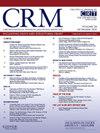外周血管内碎石术促进经口经导管主动脉瓣置换术 - 确定最佳可治疗外周动脉疾病负担
IF 1.6
Q3 CARDIAC & CARDIOVASCULAR SYSTEMS
引用次数: 0
摘要
经股动脉导管主动脉瓣置换术(TF-TAVR)已被证明优于其他途径。然而,一些评估TF-TAVR的患者不适合继发于外周动脉疾病(PAD)。外周血管内碎石术(IVL)可促进股骨通路。本研究旨在确定可以用IVL治疗的最佳病变。方法:从2018年1月至2023年7月,对所有接受TAVR的患者进行单中心回顾性分析。我们分析了接受ivl辅助的经股通路的患者。结果2862例TAVR患者中,92例(3.2%)行碎石术。ivl辅助队列的平均年龄为78±9.2岁,其中45%为女性。右髂总动脉治疗最多(47)。大多数IVL采用7mm球囊(73.9%)。所有的案例都成功了。30天死亡率为1.1%(1/92)。结论在我们的队列中,ivl促进的TF-TAVR术后并发症以小血管直径(≤4.7 mm)、明显的管腔损失(狭窄50%)和重钙负担(弧形钙化180°)更为常见。研究结果支持使用IVL来扩大可以接受TF-TAVR的患者群体,而不会因各种形式的替代途径而增加风险。注目录总结:辅助TF-TAVR是安全可行的。尽管在2018年引入了TAVR临床实践,但ivl促进的TF-TAVR并没有定期进行,可能会增加符合TF-TAVR条件的患者人数。本文章由计算机程序翻译,如有差异,请以英文原文为准。
Peripheral intravascular lithotripsy to facilitate transfemoral transcatheter aortic valve replacement – Defining optimal treatable peripheral arterial disease burden
Background
Transfemoral transcatheter aortic valve replacement (TF-TAVR) has proven superior to alternative access. However, some patients evaluated for TF-TAVR are unfit secondary to peripheral arterial disease (PAD). Peripheral intravascular lithotripsy (IVL) can facilitate femoral access. This study aimed to characterize optimal lesions that can be treated with IVL.
Methods
Single-center, retrospective analysis of an institutional database, queried from 1/2018 through 7/2023 for all patients who underwent TAVR. Patients who received IVL-facilitated transfemoral access were analyzed.
Results
Of 2862 TAVR cases identified, 92 (3.2 %) underwent lithotripsy. The IVL-facilitated cohort had a mean age of 78 ± 9.2 years and 45 % were female. The right common iliac artery was most treated (47). Most IVL was performed with 7-mm balloons (73.9 %). All cases were successful. 30-day mortality was 1.1 % (1/92).
Conclusions
In our cohort, complications after IVL-facilitated TF-TAVR were more common with small vessel diameter (≤4.7 mm), significant luminal loss (>50 % stenosis), and heavy calcium burden (arc calcification >180°). The findings support the use of IVL to expand the population of patients who can undergo TF-TAVR without the increased risks associated with the various forms of alternative access.
Summary for annotated table of contents
IVL-facilitated TF-TAVR is safe and feasible. Despite its introduction to TAVR clinical practice in 2018, IVL-facilitated TF-TAVR is not regularly performed and could increase the population of patients eligible for TF-TAVR.
求助全文
通过发布文献求助,成功后即可免费获取论文全文。
去求助
来源期刊

Cardiovascular Revascularization Medicine
CARDIAC & CARDIOVASCULAR SYSTEMS-
CiteScore
3.30
自引率
5.90%
发文量
687
审稿时长
36 days
期刊介绍:
Cardiovascular Revascularization Medicine (CRM) is an international and multidisciplinary journal that publishes original laboratory and clinical investigations related to revascularization therapies in cardiovascular medicine. Cardiovascular Revascularization Medicine publishes articles related to preclinical work and molecular interventions, including angiogenesis, cell therapy, pharmacological interventions, restenosis management, and prevention, including experiments conducted in human subjects, in laboratory animals, and in vitro. Specific areas of interest include percutaneous angioplasty in coronary and peripheral arteries, intervention in structural heart disease, cardiovascular surgery, etc.
 求助内容:
求助内容: 应助结果提醒方式:
应助结果提醒方式:


